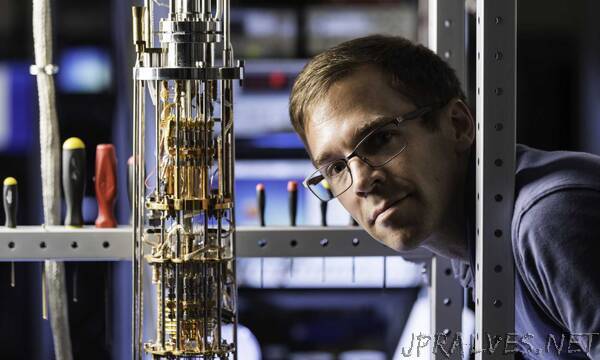
“Rochester physicists will study heat and energy flow in quantum mechanics to help develop more efficient quantum computers.
At the incredibly tiny quantum level, the laws of physics begin to act differently and the usual rules don’t apply, including the ways heat and energy flow through atoms. In order to build more efficient quantum computers and other technologies, scientists must first understand how to manipulate heat and energy in quantum-mechanical systems.
John Nichol, an associate professor of physics at the University of Rochester, is one of 21 experimental physicists who will receive $1.25 million over the next five years from the Gordon and Betty Moore Foundation’s Experimental Physics Investigator Initiative to “advance the scientific frontier in experimental physics.” The award will allow Nichol and his research group to better understand thermoelectricity and the ways heat and energy flow at the nanoscale level of quantum mechanics.
Chilling out with quantum dots
Thermoelectricity is generating electrical power from heat flow and vice versa. Scientists predict that semiconductor quantum dots—tiny particles that trap electrons—can enable high-efficiency thermoelectric power generation and refrigeration. Nichol and the members of his lab will explore how refrigerators based on quantum dots can cool atoms to nearly absolute zero temperatures, making quantum computers colder and improving the computers’ performance.
Quantum computers require cold environments because they rely on delicate objects called quantum bits, or qubits. Most qubits must be cooled to within a few thousandths of a degree of absolute zero to eliminate thermal noise and vibrations, which tend to destroy the information contained in the qubits. Achieving the cryogenic environments for qubits requires significant energy and expense. Nichol’s research will explore new ways to create ultra-cold conditions for qubits and how to reach even colder temperatures than what is possible with today’s technologies.
Untangling entanglement and superposition
Nichol and his team will also research two specific quantum phenomena: superposition—when a tiny particle like an electron can be in two different places or states at the same time, similar to a double-sided coin; and entanglement—when the properties of one particle are interlinked with the properties of another particle so that the state of one instantly affects the state of the other, even when the particles are separated by a large distance.
The researchers will determine how superposition and entanglement can enhance thermoelectric power generation and refrigeration and how to harness the flow of heat to create superposition and entanglement.
“We still do not fully understand all of the ways that heat and energy flow in quantum devices,” Nichol says. “Our research aims to improve this understanding while at the same time providing new ways to make qubits colder and advance the field of quantum computing.””
